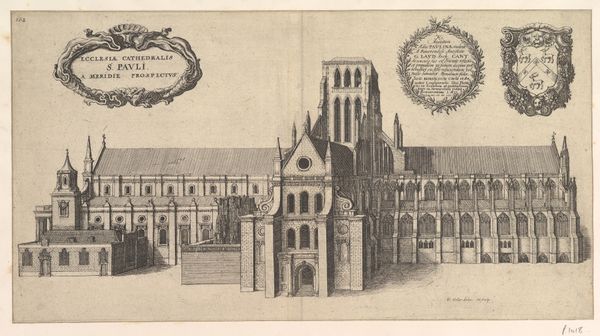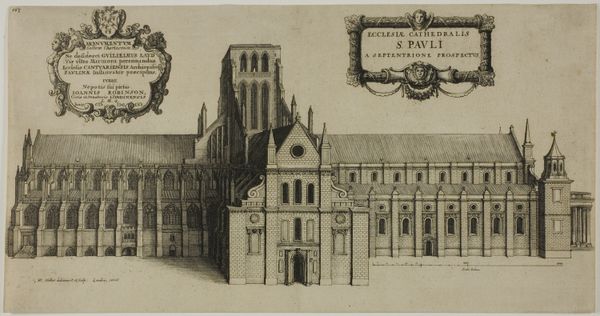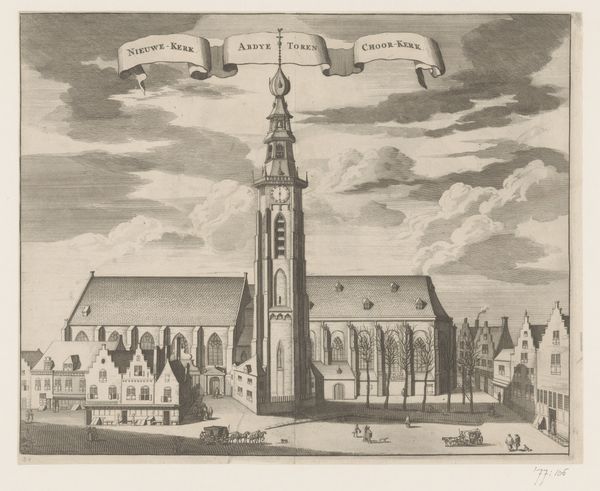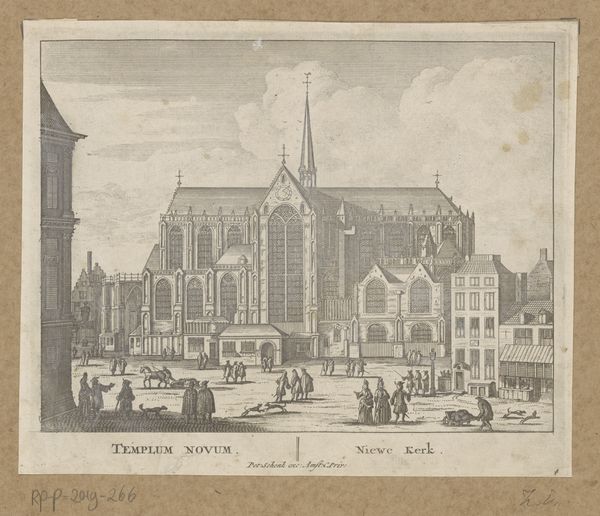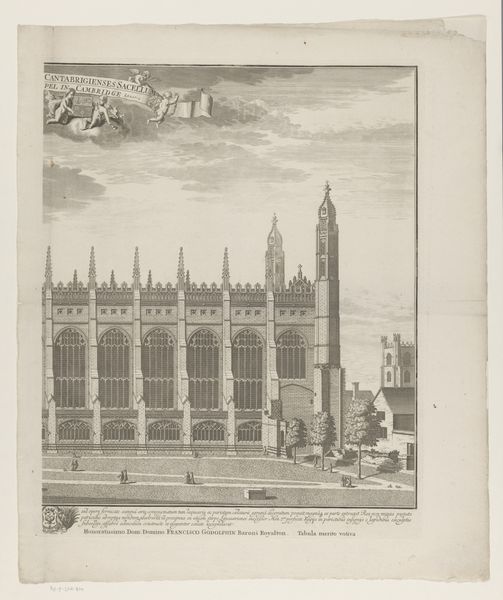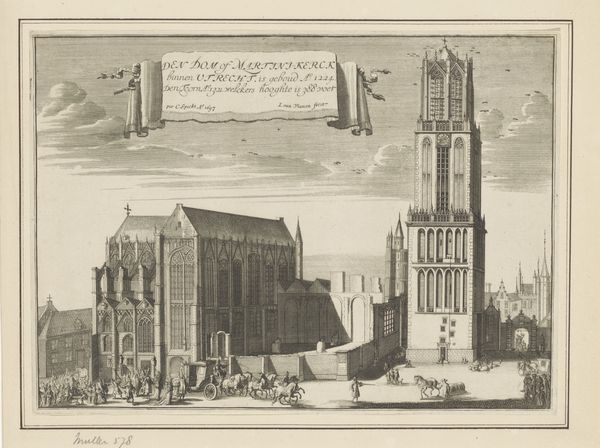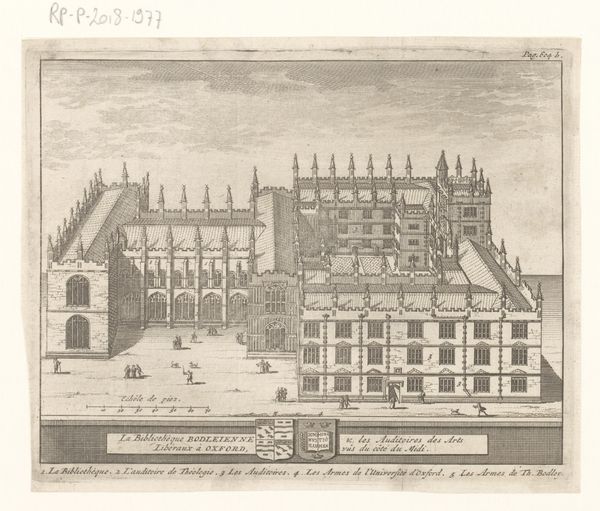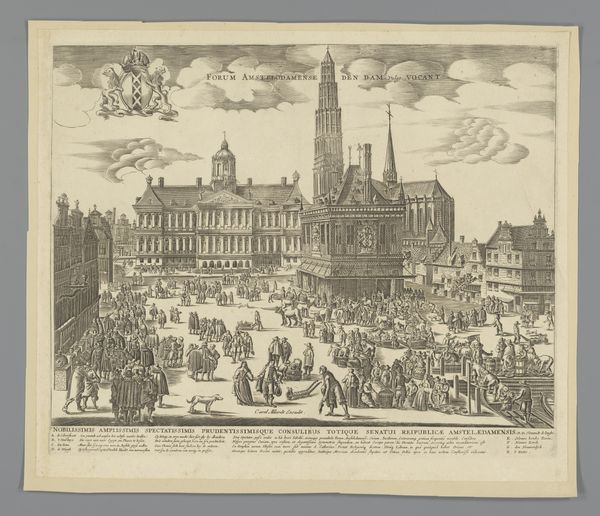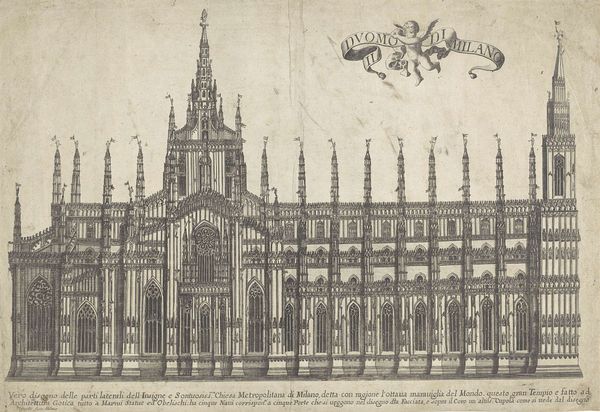
Saint Paul's from the South Showing the Spire (Ecclesiae Paulinae Prospectus...) (from William Dugdale, "The History of St. Paul's Catherdral in London," 1658) 1657
0:00
0:00
drawing, print, etching, engraving, architecture
#
drawing
#
baroque
# print
#
etching
#
cityscape
#
engraving
#
architecture
Dimensions: Plate: 10 1/4 × 13 13/16 in. (26 × 35.1 cm) Sheet: 10 3/8 × 13 7/8 in. (26.3 × 35.2 cm)
Copyright: Public Domain
This print of Saint Paul's Cathedral was made by Wenceslaus Hollar around 1658, using the technique of etching. This process involves coating a metal plate with wax, drawing through it with a needle, then immersing the plate in acid. The acid bites into the exposed lines, which are then inked and printed. Look closely, and you can see how the etching allows for incredibly fine detail, capturing the cathedral’s gothic architecture and towering spire. Hollar was a master of this reproductive technique, and this print was made for a book documenting the cathedral's history. Consider the labor involved: the meticulous drawing, the careful application of acid, the printing process itself. This wasn't just about art; it was about information. Prints like these circulated widely, documenting architecture, events, and ideas. In a world before photography, etching was a crucial tool for visualizing and disseminating knowledge. It collapses any distinction between art, craft, and industry, reminding us that images have always been part of a larger network of production and exchange.
Comments
No comments
Be the first to comment and join the conversation on the ultimate creative platform.
